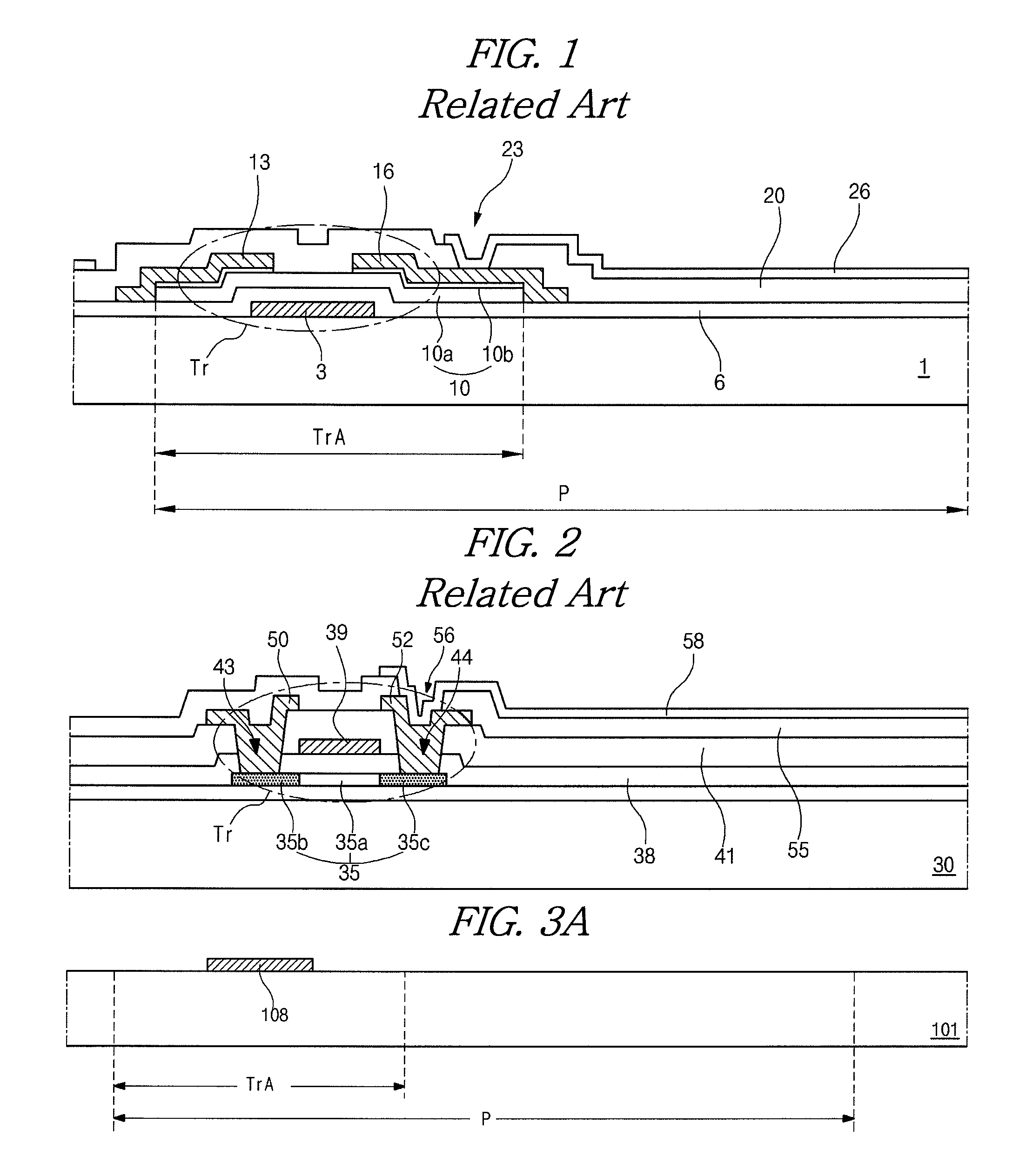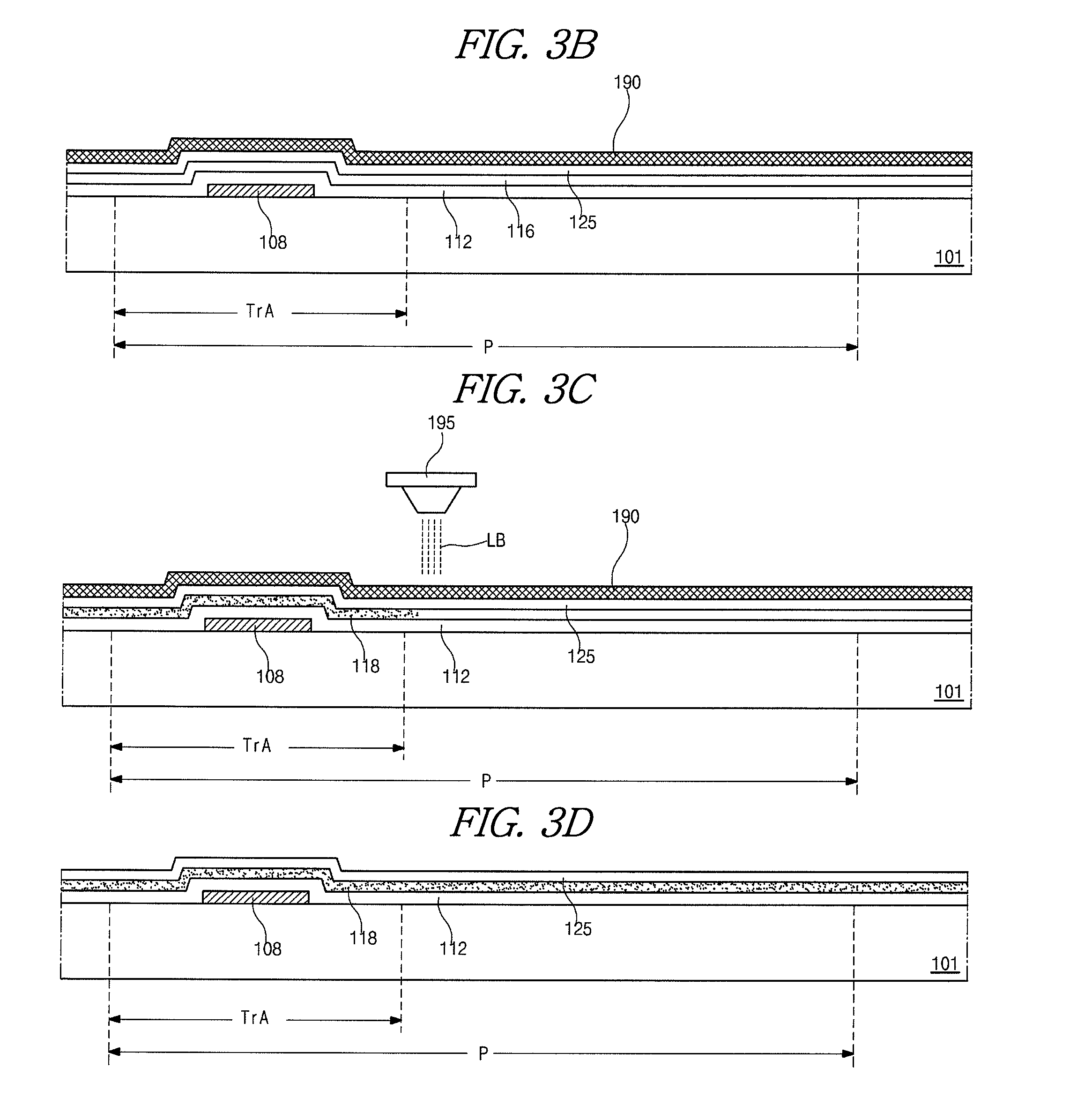Method of fabricating array substrate
a technology of array substrate and substrate layer, applied in the field of array substrate, can solve the problems of reducing the mobility of the active layer of intrinsic amorphous silicon, limiting the use of driving elements, and reducing the use of switching elements or driving elements, so as to reduce production costs and improve production yield
- Summary
- Abstract
- Description
- Claims
- Application Information
AI Technical Summary
Benefits of technology
Problems solved by technology
Method used
Image
Examples
first embodiment
[0028]FIG. 3A to 3M are cross-sectional views of a fabricating process of an array substrate according to the present invention. For convenience of explanation, a switching region is defined in a pixel region.
[0029]As shown in FIG. 3A, a first metal layer (not shown) is formed on a substrate 101 by depositing a first metallic material. For example, the first metallic material may include one of aluminum (Al), Al alloy (AlNd), copper (Cu), Cu alloy and chromium (Cr). The first metal layer is patterned by a first mask process to form a gate line (not shown) and a gate electrode 108 connected to the gate line. The mask process includes a step of forming a photoresist (PR) layer on the first metal layer, a step of exposing the PR layer using an exposing mask, a step of developing the exposed PR layer to form a PR pattern, a step of etching the first metal layer using the PR pattern as an etching mask and a step of stripping the PR pattern.
[0030]FIG. 3A shows the first metal layer having...
second embodiment
[0066]Next, as shown in FIG. 4L, a transparent conductive material layer (not shown) is formed on the passivation layer 240 by depositing a transparent conductive material. For example, the transparent conductive material may include indium-tin-oxide (ITO) or indium-zinc-oxide (IZO). The transparent conductive material layer is patterned by a fifth mask process to form a pixel electrode 250 in the pixel region P. The pixel electrode 250 is disposed on the passivation layer 240 and is connected to the drain electrode 238 through the drain contact hole 242. By the above process, the array substrate according to the present invention is obtained.
[0067]In the second embodiment, the array substrate is fabricated by a five mask process. Accordingly, there is advantages in production costs and production yield with compared to the first embodiment. In addition, since the gate insulating layer 212 is covered with the polycrystalline silicon layer 218 during the BOE over-etching process for ...
PUM
| Property | Measurement | Unit |
|---|---|---|
| carrier mobility | aaaaa | aaaaa |
| wavelength | aaaaa | aaaaa |
| energy | aaaaa | aaaaa |
Abstract
Description
Claims
Application Information
 Login to View More
Login to View More - R&D
- Intellectual Property
- Life Sciences
- Materials
- Tech Scout
- Unparalleled Data Quality
- Higher Quality Content
- 60% Fewer Hallucinations
Browse by: Latest US Patents, China's latest patents, Technical Efficacy Thesaurus, Application Domain, Technology Topic, Popular Technical Reports.
© 2025 PatSnap. All rights reserved.Legal|Privacy policy|Modern Slavery Act Transparency Statement|Sitemap|About US| Contact US: help@patsnap.com



